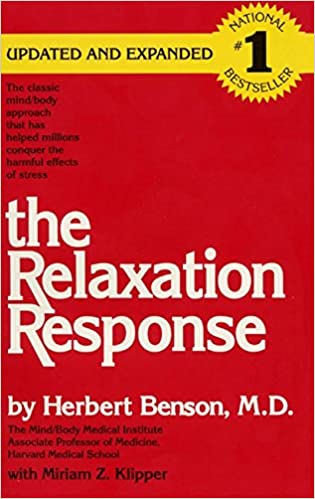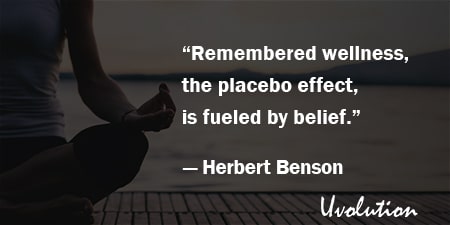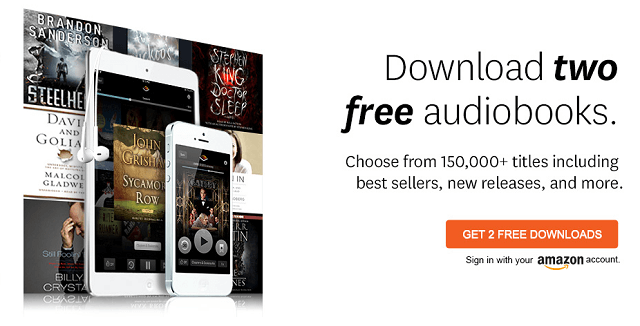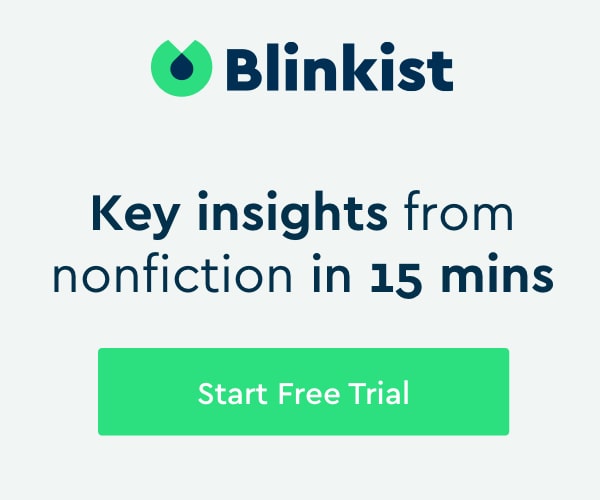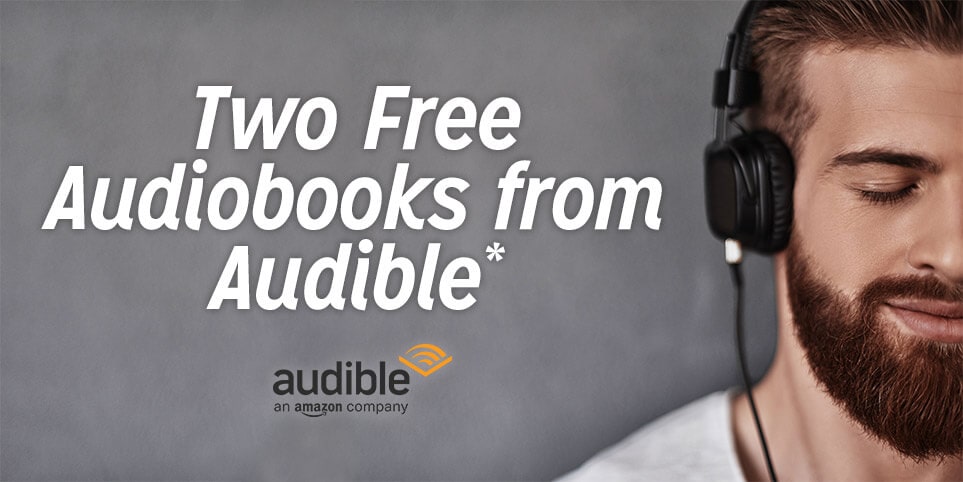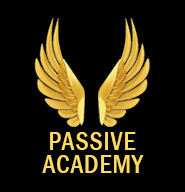The Relaxation Response by Herbert Benson
The Book in 1 Sentences
“Why this could be the most important book in your life...
Sixty to ninety percent of visits to physicians are for conditions related to stress.
The Relaxation Response counteracts the harmful effects of stress in a host of conditions including: anxiety, mild and moderate depression, anger and hostility, hypertension, irregular heartbeats, pain, premenstrual syndrome, infertility, hot flashes and menopause, insomnia, irritable bowel syndrome, and many other stress-related illnesses...
You can learn simple mind/body techniques to elicit the Relaxation Response without leaving home, and you can use them anywhere. The Relaxation Response is without serious side effects and reaffirms the value of prayer, meditation, and relaxation in your daily life!” ~ Herbert Benson
5 BIG Ideas
1. The Fight-or-Flight Response Vs The Relaxation Response
2. How Can We Elicit The Relaxation Response?
3. The Placebo Effect = ‘Remembered Wellness'
The Relaxation Response Book Summary
1. The Fight-or-Flight Response Vs The Relaxation Response
“Amazingly, the very room and building in which my colleagues and I studied the T.M. devotees was where Walter B. Cannon, the famous Harvard physiologist, had discovered ‘the fight-or-flight response’ sixty years before. For those of you unfamiliar with this finding, it was revolutionary.
The fight-or-flight response offered glimpses into the evolutionary momentum that equipped modern human being with keen physiologic survival instincts. Cannon theorized that mammals have a physical ability to react to stress that evolved as a survival mechanism.
When faced with stressful situations, our bodies release hormones—adrenaline and noradrenaline, or epinephrine and norepinephrine—to increase heart rate, breathing rate, blood pressure, metabolic rate and blood flow to the muscles, gearing our bodies either to do battle with an opponent or to flee.
Our studies revealed that the opposite was also true. The body is also imbued with what I termed the Relaxation Response—an inducible, physiological state of quietude. Indeed, our progenitors handed down to us a second, equally essential survival mechanism—the ability to heal and rejuvenate our bodies.
In modern times, the Relaxation Response is undoubtedly even more important to our survival, since anxiety and tension often inappropriately trigger the fight-or-flight response in us. Regular elicitation of the Relaxation Response can prevent, and compensate for, the damage incurred by frequent nervous reactions that pulse through our hearts and bodies.”
“Because the fight-or-flight response and the Relaxation Response are in opposition, one counteracts the effects of the other. This is why we feel the Relaxation Response is of such import, for with its regular use it will offset the harmful effects of the inappropriate elicitation of the fight-or-flight response.”
a. How Does The Fight-or-Flight Response Work?
David Perlmutter and Alberto Villoldo - in their great book Power Up Your Brain - tell us: “As we discussed earlier, the fight-or-flight response works through the HPA axis. When there are no perceived external threats, the HPA axis is at rest and all the body’s resources are dedicated to the renewal of its systems and the growth of new cells.
When the body perceived a new threat, such as the sudden roar of a lion or the blare of an automobile horn, the HPA axis kicks in and signals the release of cortisol and adrenaline, which constrict blood vessels in the digestive tract and redirect blood flow away from the internal organs to the extremities, preparing us to fight or flee.
These hormones also constrict blood vessels in the prefrontal cortex, where our logic and reasoning centers are located, and redirect blood to the old brain, where reflexive, instinctive action originates. As a result, our thinking becomes muddled and we operate like a cornered animal.”
Herbert Benson says: “The major physiologic change associated with meditation is a decrease in the rate of metabolism. Such a state of decreased metabolism, called hypometabolism, is a restful state. Like sleep, another hypometabolic state, meditation causes bodily energy resources to be taxed less.”
b. The Challenge Response
Kelly McGonigal - in her great book The Upside of Stress - tells us: “Like a fight-or-flight response, a challenge response gives you energy and helps you perform under pressure.
Your heart rate still rises, your adrenaline spikes, your muscles and brain get more fuel, and the feel-good chemicals surge. But it differs from a fight-or-flight response in a few important ways: You feel focused but not fearful.
You also release a different ratio of stress hormones, including higher levels of DHEA, which helps you recover and learn from stress. This raises the growth index of your stress response, the beneficial ratio of stress hormones that can determine, in part, whether a stressful experience is strengthening or harmful...
People who report being in a flow state—a highly enjoyable state of being completely absorbed in what you are doing—display clear signs of a challenge response.
Artists, athletes, surgeons, video gamers, and musicians all show this kind of stress response when they’re engaged in their craft or skill. Contrary to what many people expect, top performers in these fields aren’t physiologically calm under pressure; rather, they have strong challenge responses.
The stress response gives them access to their mental and physical resources, and the result is increased confidence, enhanced concentration, and peak performance.”
2. How Can We Elicit The Relaxation Response?
“From the collected writings of the East and West, we have devised a simplified method of eliciting the Relaxation Response and we will explain its use in your daily life.
You will learn that evoking the Relaxation Response is extremely simple if you follow a very short set of instructions which incorporate four essential elements:
(1) a quiet environment;
(2) a mental device such as a word or phrase which should be repeated in a specific fashion over and over again;
(3) the adoption of a passive attitude, which is perhaps the most important of the elements; and (4) a comfortable position.
Your appropriate practice of these four elements for ten to twenty minutes once or twice daily should markedly enhance your well-being.”
“The subject’s attitude toward the exercise, and this is absolutely essential, must not be intense and compulsive, but of a ‘let it happen’ nature called ‘passive concentration.’”
3. The Placebo Effect = ‘Remembered Wellness'
“Researchers had long relied on the 30 percent success rate attributed to the placebo effect by Dr. Beecher. Our work showed that far from an irritating little variable, the placebo effect deserved our utmost attention.
Indeed, evolution made it an innate capacity for healing within each of us—a resource that could be effective the majority of the time. To disassociate it from the negative response it provoked in medicine, I proposed renaming it ‘remembered wellness.’
Remembered wellness, the placebo effect, is fueled by belief.”
Bernie Siegel, M.D. - in Love, Medicine and Miracles - also says: “One of the best ways to make something happen is to predict it. Pooh-poohed for some twenty years by the medical establishment, the placebo effect—the fact that about one-fourth to one-third of patients will show improvement if they merely believe they are taking an effective medicine even if the pill they are taking has no active ingredient—has now been accepted as genuine by most of the profession.”
Ellen Langer - In Counterclockwise - also tells us: “When we see mind and body as parts of a single entity, the research on placebos takes on new meaning and suggests we can not only control much of our disease experience, but we may also be able to extend our ability to gain, recover, or enhance our health.
Placebos often come in the form of a single word that captures a richer mindset. In one study I conducted with my students, we explored the mindset most of us have regarding excellent vision air force pilots have.
All participants were given a vision test. One group of participants were then encouraged to role-play ‘air force pilots.’ They dressed the part and, in uniform, sat in a flight simulator. They were asked to read the letters on the wing of a nearby plane, which were actually part of an eye chart.
Those participants who adopted the ‘pilot’ mindset, primed to have excellent vision, showed improved vision over those who were simply asked to read an eye chart from the same distance.”
4. The ‘two-step process’ the monks had practiced!
“In another example, the team watched as monks, dressed in nothing but small loincloths, were draped in wet sheets while exposed to near-freezing temperatures. You and I would experience uncontrollable shivering, develop hypothermia, and perhaps die under these circumstances.
But because these monks had developed amazing physiological control over years of practicing this type of heat-producing meditation, they experienced no distress in these conditions. Instead, within minutes, the body temperatures they produced steamed and dried the wet, cold sheets.”
“The monks accomplished this first by meditating and evoking the Relaxation Response in the same simple way my colleagues and I had studied. When their minds were quiet, they then visualized a fire or heat...
Eager to reproduce, in some measure, the benefits we had witnessed in the Tibetan monks, my colleagues and I from that point on began to teach our patients the ‘two-step process’ the monks had practiced.
First, you evoke the Relaxation Response and reap its healthful rewards.
Then, when your mind is quiet, when focusing has opened a door in your mind, visualize an outcome that is meaningful to you.
If you are intent on alleviating a pain, envision yourself without the pain. If you are concerned with your performance at work or on the golf course or tennis court, imagine yourself performing well in these venues.
Whatever your goal, these two steps can be powerful, allowing anyone to reap the benefits of the Relaxation Response and take advantage of a quiet mind to rewire thoughts and actions in desired directions.”
5. The Relaxation Response is a Natural Gift
“Throughout this book we have tried to show you that the Relaxation Response is a natural gift that anyone can turn on and use. By bridging the traditional gaps between psychology, physiology, medicine, and history, we have established that the Relaxation Response is an innate mechanism within us.
The Relaxation Response is a universal human capacity, and even though it has been evoked in the religious history, you don’t have to engage in any rites or esoteric practices to bring it forth.
The experience of the Relaxation Response has faded from our everyday life with the waning of religious practices and beliefs, but we can easily reclaim its benefits.”
“We learned that with self-care, we can effectively treat any disorder to the extent that it is caused by stress or mind/body interactions. Indeed, we can partly relieve or cure most of the common complaints patients bring to their doctors’ offices, simply by applying self-care techniques.”
That was my QUICK summary of the great book The Relaxation Response by Herbert Benson. If you’re interested, get your copy. There is a HUGE amount of life-changing ideas in this book, and we’ve only touched on a tiny bit of it.
Buy The Book: The Relaxation Response by Herbert Benson

GET Blinkist 7 Days FREE Trial
3000+ Book Summaries
(Audio and Text)

